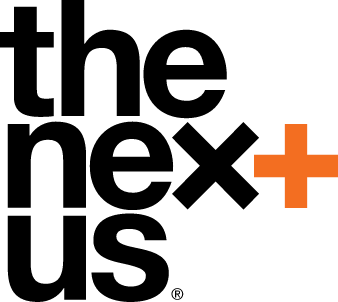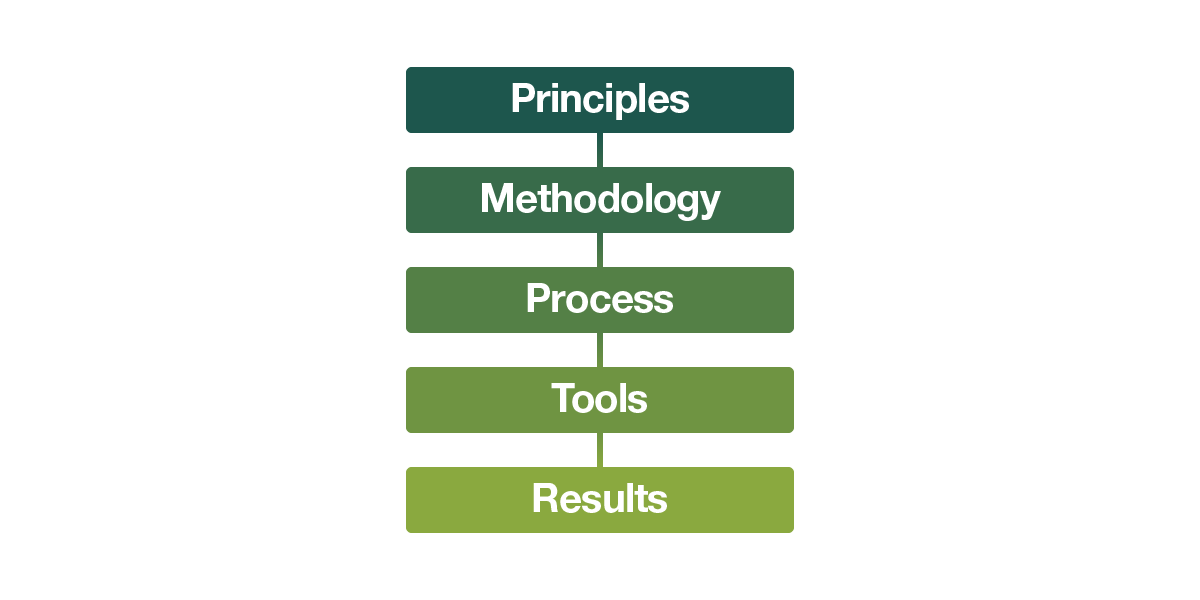In my professional work, I think a lot about the differences between simple and complex systems.
As I wrote in my earlier article “It’s (not) complicated”:
“We all understand simple mechanical systems like pulleys. Complex systems, like rainforests, however, work differently. They exhibit unique characteristics, including modularity, homeostasis, self-organization, resilience, emergence, non-linearity, inter-dependence with other complex systems, and collapse.”
Some systems actually are complicated, though, or at least partially complicated—more like a Rube Goldberg machine than a rainforest or a pulley.
The human olfactory system is a good example. Biophysicist Luca Turin has argued persuasively that some defining aspects of human smell rely on quantum physics (a complex system), but at the same time, that’s not the full story:
“[Dyson’s proposal] is clearly an extra-scientific argument, which appeals to a metaphysical sense of elegance. The hold of such concepts is greater than one might suppose. Physicists in particular prize ‘simplicity’ and ‘beauty’ in a theory. In biology, by contrast, there are more examples of what can only be described as ‘contraptions’…” – The Secret of Scent
You know where I’m going with this…
Businesses are a lot like noses.
They include simple, complex, and complicated aspects at the same time. And though these different kinds of systems are always linked, they run on different rules and thrive under different conditions:
- Simple systems get healthier when they get more efficient. Think of a pulley with less friction, or a customer service request that gets routed and resolved more quickly.
- Complex systems get healthier when they get more complex. Think of a coral reef with more varied flora and fauna filling every crevice; a romantic couple that reaches a deeper level of shared commitment and understanding; or a human brain making higher-level, novel connections between diverse topics.
- Complicated systems get healthier when we respect their unique quirks. Think of the instantiating, idiosyncratic design choices of a software program you use every day; the fussy but real criteria of the analysts or standards groups in your industry; or the parliamentary rules that govern the legislative process in your home country.
Organizations can make major errors when they mix up these different kinds of systems… by streamlining complexities, charging ahead while ignoring real-world complications, or floating 40,000 feet above practical realities.
Trying to make a complex system more efficient is a particular danger, since this is equivalent to replacing a rainforest with a pesticide-dependent, monoculture orchard. Efficiency is a lot like cyanide… it smells tasty but it can kill you if you’re not careful.
Here are some observations that I personally use to understand new topics and situations quickly.
1. Goals are simple.
Businesses exist in complex, complicated, and chaotic environments. But a business’s goals are always simple: goals must be focused in order to create focus. Simple systems get healthier when they get more efficient, so every organization must maximize the efficient execution of its goals.
Knowing this in advance saves me a lot of time whenever I’m trying to learn a new company or industry. I can ask the leaders of a company in a straightforward way what its goals are, and I can evaluate based on what I know from other contexts whether those goals make sense.
I shared in an earlier series the following framework, which I implicitly use whenever I’m trying to make goal execution more efficient:
An expert can always quickly assess whether an organization is grounded in clear principles and appropriate methodologies. Errors here are pretty easy to spot and verbalize.
Once we’re down at the level of processes, less expertise is required. If we already know what we’re essentially trying to do, it’s easy to set metrics for how to do it better using internal or external benchmarks. For example, if you’re a marketer and want to know the latest typical email open rates or landing page bounce rates for your industry or campaign type, that information is publicly available and always a click away.
Selecting a new tool might seem daunting, in part because the pros and cons of, say, Drift vs. Intercom, are relatively abstract. But there is no right answer to anything in the abstract. If we’re clear on own unique goals, situation, and criteria, then the evaluation can be quick. It’s the criteria definition—i.e., the goal-setting—not the tool evaluation, that takes the most time.
2. Strategic work is complex.
Complex systems all work the same way, so we should always expect emergence, chaos, redundancy, and creative destruction in industry competition, financial markets, digital ecosystems, and social trends. For example, in the fragrance industry, it probably would have been very difficult a few years ago to predict exactly that digital influencers and solo chemists would find each other to start designing and distributing niche perfumes… but this is the kind of emergent phenomenon we could have easily predicted.
Organizational cultures are also complex and thus tend to fall into predictable patterns of dysfunction. The biggie I always look for is that all organizations try to preserve their blind spots and the status quo, as do all CEOs. They do this not because they are inept, but because they are human. Humans are complex, and complex systems try to preserve homeostasis.
While trying to preserve homeostasis, complex systems also must react to new stimuli. Complex systems get healthier when they get more complex, which means higher levels of integration and consilience. The details vary, but the patterns are consistent. An expert in organizational psychology, financial markets, risk arbitrage, data science, digital media strategy, or any other complex domain can often assess very quickly why and how an organization needs to evolve to a higher level integration and dynamic complexity. These perspectives are rarely appreciated initially because the homeostatic nature of the existing systems will always try to reject them. This itself is predictable and should never be taken personally.
3. Constraints are complicated.
Rainforests are complex systems, but let’s say that this particular rainforest has a cliff twenty miles to the south, and then a big town on its northern border, and that burnt area where lightning struck last year…
Real-world constraints bound the landscape, and they tend to be complicated. A nice literal example of this: much of the gameplay of my favorite board game Dominion is either simple or complex, but the basic rules that define the game are complicated. There are only so many cards, and they are laid out in a certain way depending on the number of players, etc. etc. etc.
Here are some complicated topics I regularly encounter:
- Know-how in a given industry
- Know-who in a given industry
- The lingo of any given industry
- The defining quirks of (otherwise complex) software applications
For my own benefit, I’ve created simple and repeatable procedures to ascend the learning curve for each of these topics as fast as possible. I’ve summed these up in a follow-on post: “Drawing the owl.”
Right-mindedness
In my executive coaching work, I often invite clients to consider not just what they are paying attention to, but how they are paying attention.
I personally find that my thinking changes markedly depending on whether I’m working with a simple, complex, or complicated system:
- Simple: Goals are simple, and I find that when I’m attending to my goals, my mind gets very clear, my curiosity and focus very high. Focusing on goals produces dopamine and pulls me out of competing worries and distractions. When goals are vague, arbitrary, or conflicting, I find my attention bounces from topic to topic, and it’s hard to focus. I also find myself checking in with my emotions and body more to reflect or self-soothe, which is how we are wired to understand complex or complicated situations, not simple ones. My own attention patterns, in other words, are a clue as to whether goal-setting and goal management in a given company are optimally efficient. As much as possible, we want everyone in an organization to have clarity and a flow state when it comes to their goals.
- Complex: When I am trying to understand complex systems, I find myself implicitly using what Daniel Kahneman calls the “System 2” brain. I scan for nuances and hidden signals. Intellectually, I look for what I typically think of as “negative spaces” or “shadow material,” including indirect competition, trends and opportunities in adjacent domains, and conversations that can’t be held by the current internal or external hegemony. I also connect to my emotions and physical sensations. If I’m trying to understand how a specific company culture works, I may notice myself feeling other people’s feelings for them, since what can’t be discussed is often either projected, avoided, or enacted interpersonally. My understanding of complex systems, in other words, combines textbook knowledge of resilience with spidey-sense intuition based on experience.
- Complicated: When I’m trying to learn something complicated, I find that I am initially bored and avoidant. One of the mental tricks I learned from David Rock’s book Your Brain at Work is to choose to get really curious whenever I’m feeling bored and need to pay closer attention. Curiosity produces dopamine, which makes it easier for me to focus. Coffee also stimulates dopamine, so when it’s time to learn something complicated, I often have a cup of coffee in hand.
Yes, sometimes I’m mindful, sometimes I’m caffeinated.
I’m complicated that way.



Leave a Reply